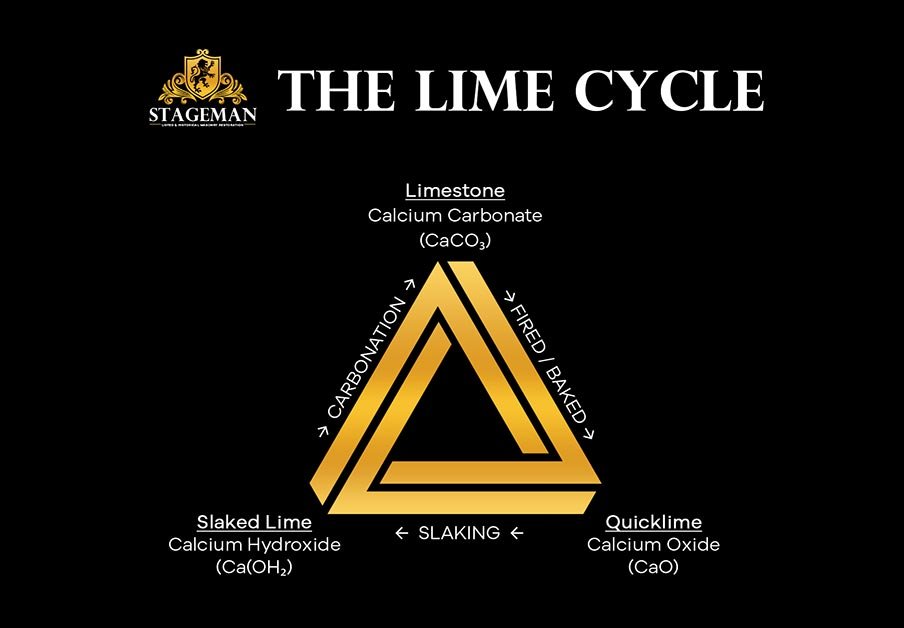
Downloadable PDF Version
Lime Cycle Process
❖ Limestone is quarried from a natural resource. Known as Calcium Carbonate or Magnesium Carbonate depending on geographical location.
❖ The Limestone is then stacked and Fired in a Kiln or Clamp between 900°C and 1200°C.
❖ Firing causes the carbon dioxide to be released from the Limestone creating Quicklime (Calcium Oxide – CaO).
❖ To be able to use Quicklime as a mortar it must be re-hydrated, this process is known as ‘slaking’. This process causes a volatile reaction generating up to 200°C of heat, this is why slaking should only be carried out by trained professionals. Slaked lime is also known as Calcium Hydroxide (Ca(OH₂).
❖ Slaking can achieve 2 different types of binder for mortars. If the Quicklime is hydrated with a small amount of water it will create a ‘hydrate / hydraulic’ powder that can be dry-stored in bags or air tight tubs. If you slake the lime with a larger amount of water it can be churned into a ‘putty / wet lime’ that can be stored in water tight containers for use.
❖ Once the Slaked Lime is mixed with the desired aggregate it is ready for building use. However, because Slaked Lime is still in it’s chemical cycle of re-hydrating the brick/stone work must be kept slightly moist periodically otherwise the mortar will shrink from under-hydrating.
❖ As soon as the mortar is slaked it will begin to absorb as much carbon dioxide as possible from its surroundings, this process is known as carbonation (or ‘curing’). The purer the lime the longer it will take to cure, even beyond a full year. The more impurities (such as silica) that are present in the lime, rather than just hardening from carbonation it will also ‘set’, a very similar way that Portland cement sets.
